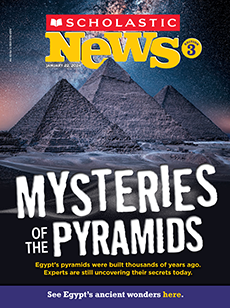James W. Marshall couldn’t believe his eyes! It was January 24, 1848, and he had just spotted a shiny pebble in a river. Soon he spotted another small nugget sparkling in the sun.
He later said, “It made my heart thump, for I was certain it was gold.”
Marshall was right. He had discovered gold while building a sawmill called Sutter’s Mill in California.
Without knowing it, he had set off the California Gold Rush. This was the start of the largest migration our country had ever seen—and the U.S. would never be the same.
James W. Marshall couldn’t believe his eyes! It was January 24, 1848. He had just spotted a shiny pebble in a river. Soon he spotted another small nugget sparkling in the sun.
He later said, “It made my heart thump, for I was certain it was gold.”
Marshall was right. He had discovered gold while building a sawmill called Sutter’s Mill in California.
Without knowing it, he had set off the California Gold Rush. This was the start of the largest migration our country had ever seen. The U.S. would never be the same.

